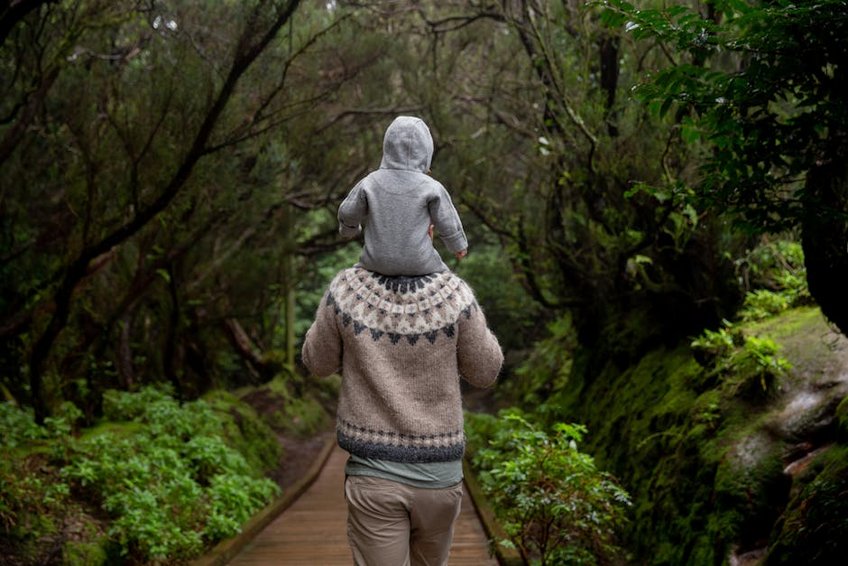Silent Retreats and Nature Walks: Your Ultimate Guide to Finding Peace
Silent retreats and nature walks represent one of the most transformative travel experiences available today, offering a perfect antidote to our increasingly noisy and fast-paced world. These immersive journeys combine the profound benefits of meditation and mindfulness with the healing power of the natural environment, creating opportunities for deep introspection, stress reduction, and genuine connection with both yourself and the world around you. Whether you’re seeking spiritual growth, mental clarity, or simply a break from digital overload, silent retreats and nature walks provide structured yet flexible frameworks for personal discovery. The combination of intentional silence and natural surroundings activates different parts of our consciousness, often leading to breakthroughs in creativity, problem-solving, and emotional balance that continue to benefit participants long after they return home. This comprehensive guide will help you understand everything from different retreat types and destinations to practical preparation tips and what to expect from your first experience with silent retreats and nature walks.
Silent Retreats and Nature Walks – Essential Information
Understanding the fundamental concepts behind silent retreats and nature walks is crucial before embarking on this journey. These experiences are not merely vacations but intentional practices designed to facilitate personal growth and mindfulness. Silent retreats typically involve periods of voluntary silence ranging from a few days to several weeks, often combined with meditation, yoga, or contemplative practices. Nature walks complement this practice by providing a moving meditation through natural environments, allowing participants to connect with the healing rhythms of the natural world. The synergy between silence and nature creates a powerful container for transformation, reducing external stimuli while increasing internal awareness. Many participants report significant reductions in stress, improved mental clarity, and deeper appreciation for simple pleasures after completing these retreats.
What Are Silent Retreats and Nature Walks?
- Structured programs combining meditation practices with outdoor immersion in natural settings
- Intentional periods of silence ranging from 24 hours to 10+ days for deeper self-reflection
- Guided activities including mindful walking, meditation sessions, and nature observation exercises
- Budget options ($50-150/night): Rustic retreat centers, dormitory accommodations, self-catering options, and shorter durations
- Mid-range options ($150-350/night): Private rooms, experienced teachers, organic meals, and well-maintained facilities
- Luxury options ($350-800+/night): Premium locations, spa facilities, gourmet cuisine, and personalized guidance
- Mindful Magazine – Science and Practice of Mindfulness
- Retreat Guru – Global Retreat Directory
- National Institutes of Health – Nature Therapy Research
Key Benefits and Transformative Effects
Participants consistently report numerous benefits from combining silent retreats with nature walks. The practice reduces cortisol levels and blood pressure while improving mood and cognitive function. The natural environment enhances these effects through phytoncides (airborne chemicals from plants) that boost immune function and negative ions that improve respiratory health. The silence component allows the nervous system to reset from constant stimulation, leading to improved sleep patterns and emotional regulation. Many people discover creative solutions to personal or professional challenges during these retreats, as the quiet mind has space to make new connections and insights that are often drowned out by daily noise and distractions.
Silent Retreats and Nature Walks – Planning Your Trip
Proper planning ensures your silent retreat and nature walk experience matches your expectations and needs. Begin by assessing your comfort level with silence and outdoor activities—some retreats offer partial silence options for beginners. Consider the duration that fits your schedule; weekend retreats work well for first-timers, while week-long programs provide deeper immersion. Research the retreat center’s philosophy and teaching style, as approaches vary from secular mindfulness to spiritually-oriented traditions. Location matters significantly—coastal, forest, mountain, or desert settings each offer unique natural environments that affect your experience. Check the physical activity level required, as some nature walks cover challenging terrain while others focus on gentle strolls. Finally, consider whether you prefer guided group retreats or self-directed silent stays, as each offers different levels of structure and support.
Best Time to Visit Silent Retreat Centers
The ideal timing for silent retreats and nature walks depends on your preferred climate and seasonal considerations. Spring (March-May) and autumn (September-November) typically offer the most comfortable temperatures for outdoor activities across most regions. Summer months provide longer daylight hours but may require heat management strategies, while winter retreats offer unique opportunities for snow-based nature walks and cozy indoor meditation. Consider seasonal natural phenomena—spring blooms, autumn colors, or migratory bird patterns—that can enhance your experience. Shoulder seasons often mean fewer participants and lower prices, while peak seasons may offer more program options. Tropical destinations have different considerations, with dry seasons (November-April) generally preferable for comfortable nature immersion.
Budget Planning and Costs
Essential Preparation Checklist
Preparing properly for silent retreats and nature walks significantly enhances your experience. Begin adjusting your sleep schedule gradually toward the retreat’s daily rhythm about a week beforehand. Reduce caffeine and alcohol consumption to minimize withdrawal symptoms during the retreat. Practice short periods of silence at home to acclimatize to the experience—start with an hour and gradually increase. Break in any new hiking shoes or outdoor gear to avoid discomfort during nature walks. Inform family and friends about your digital detox period to manage expectations about communication. Pack appropriate clothing for variable weather conditions, including rain gear and layers for temperature changes. Finally, set personal intentions for your retreat rather than specific expectations, allowing space for whatever arises during your experience.

Silent Retreats and Nature Walks – Top Destinations and Experiences
The global landscape offers incredible diversity for silent retreats and nature walks, each destination providing unique natural environments and cultural contexts. North America boasts numerous options from the redwood forests of California to the desert landscapes of Arizona and the mountain retreats of Colorado. Europe offers ancient pilgrimage routes, monastic traditions, and stunning alpine settings perfect for contemplative walking. Asia remains the birthplace of many meditation traditions, with Thailand, India, and Bali offering authentic experiences combining silence with tropical natural beauty. Australia and New Zealand provide dramatic wilderness settings from rainforests to coastal walks. South American retreats often incorporate indigenous wisdom and Amazonian immersion. Each location brings distinct seasonal considerations, cultural approaches to silence, and natural environments that shape the retreat experience differently.
Must-See Retreat Centers and Natural Settings
Certain destinations have gained recognition for offering exceptional silent retreats and nature walks. The Spirit Rock Meditation Center in California combines silent meditation retreats with access to beautiful hiking trails through coastal mountains. Plum Village in France, founded by Thich Nhat Hanh, offers walking meditation through picturesque countryside. The Insight Meditation Society in Massachusetts provides forested settings for deep practice. India’s Vipassana centers offer intensive 10-day silent retreats in various natural settings. New Zealand’s retreats often incorporate the stunning landscapes featured in Lord of the Rings, with fjords, mountains, and pristine forests. Costa Rica’s eco-retreats combine silence with tropical biodiversity and ocean access. Each location offers professionally facilitated programs that balance structured practice with freedom for personal exploration in nature.
Hidden Gems and Local Favorites
Beyond well-known centers, numerous hidden gems offer exceptional silent retreats and nature walks with more intimate settings. Smaller family-run retreats in Portugal’s Alentejo region provide personalized attention amidst cork oak forests. The Scottish Highlands offer remote bothies (simple shelters) for self-guided silent walks through dramatic landscapes. Japan’s temple stays (shukubo) combine Zen practice with forest bathing in ancient cedar groves. The Arizona desert hosts several retreat centers that incorporate Native American wisdom with silent contemplation. Canada’s Gulf Islands provide tranquil settings for kayaking combined with silent retreats. These less-commercialized options often offer more affordable rates, smaller group sizes, and deeper connection with local environments and traditions, providing authentic experiences away from the wellness tourism mainstream.
Silent Retreats and Nature Walks – Practical Travel Information
Navigating the practical aspects of attending silent retreats and nature walks requires attention to detail for a smooth experience. Transportation varies significantly depending on location—some retreat centers offer shuttle services from nearby airports or towns, while others require personal vehicle access. Accommodation standards range from simple dormitories to private cabins with en suite facilities. Most centers provide detailed packing lists specific to their environment and season. Communication policies differ—some retreats completely prohibit devices, while others allow limited use in designated areas. Dietary needs are typically accommodated with advance notice, with most centers offering vegetarian or vegan options. Health considerations include altitude acclimatization for mountain retreats and hydration management for desert environments. Understanding these practical elements ensures you can focus entirely on your practice rather than logistical concerns.
| Retreat Type | Typical Features | Price Range (USD per night) |
|---|---|---|
| Buddhist/Vipassana | Simple accommodation, strict silence, meditation instruction | $30-100 |
| Secular Mindfulness | Comfortable facilities, partial silence options, psychology-based | $150-300 |
| Luxury Wellness | Spa facilities, gourmet food, private guidance, premium locations | $350-800+ |
| Self-Guided | Minimal structure, personal retreat space, nature access | $50-200 |


